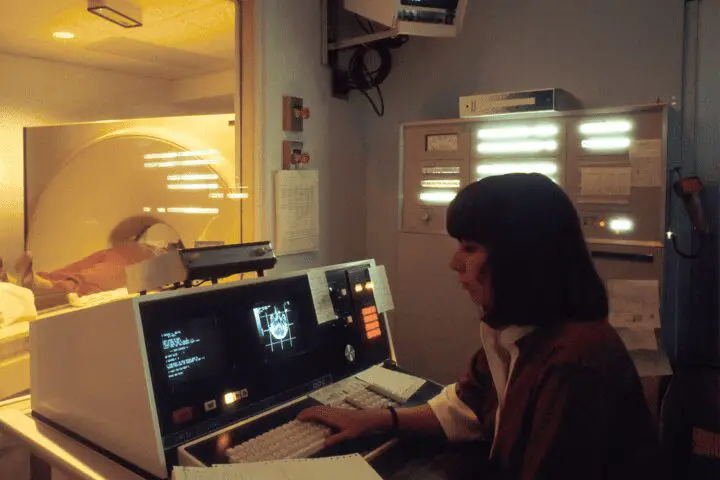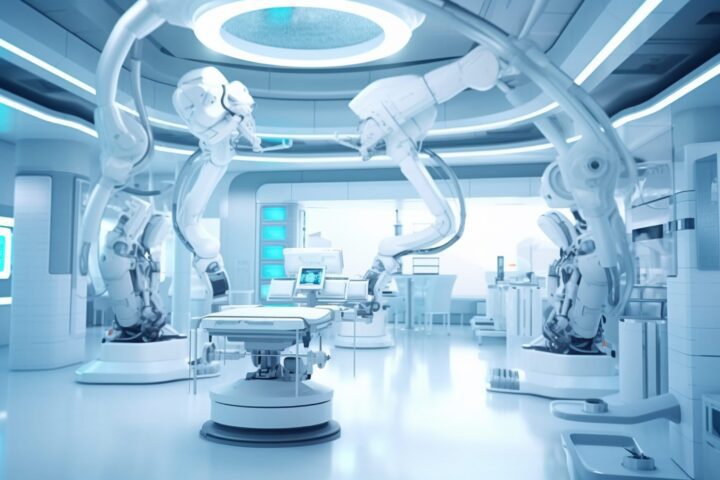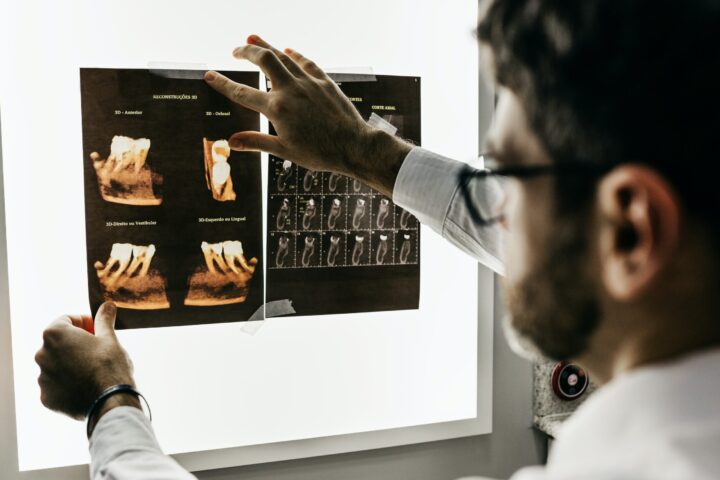Artificial Intelligence (AI) has emerged as a game-changer across many fields, and ophthalmology is no exception. Ophthalmology deals with the health of the eyes, including the diagnosis, treatment, and prevention of eye diseases.
As the prevalence of eye-related conditions increases, particularly due to aging populations and lifestyle factors, there is a pressing need for more effective and efficient eye-care solutions. This is where AI comes in. AI in ophthalmology is revolutionizing the way we approach eye care.
From early detection of diseases like glaucoma and diabetic retinopathy to enhancing surgical precision, AI is making eye care more accessible, accurate, and personalized. In this article, we will explore the various ways AI is transforming ophthalmology, discuss its impact on patient care, and consider the future of AI-driven eye care.
The Importance of Early Detection in Eye Care
Early detection of eye diseases is crucial for preventing vision loss and ensuring timely treatment. Many eye conditions, such as glaucoma, diabetic retinopathy, and age-related macular degeneration (AMD), can progress without noticeable symptoms until significant damage has occurred. This makes early detection a critical component of effective eye care.
- Challenges in Traditional Detection Methods: Traditionally, detecting eye diseases has relied heavily on regular eye exams and the expertise of ophthalmologists. However, these methods can sometimes fall short, especially when subtle early signs are missed. For example, glaucoma is often called the “silent thief of sight” because it can progress without any symptoms until irreversible damage has occurred.
- AI’s Role in Enhancing Detection: AI is changing the landscape by providing tools that can analyze vast amounts of data with incredible speed and accuracy. AI algorithms, trained on thousands of images and patient records, can identify patterns and anomalies that may indicate the early stages of eye diseases. For instance, AI can detect the earliest signs of diabetic retinopathy by analyzing retinal images, identifying microaneurysms, and other minute changes that might escape the human eye.
- Impact on Patient Outcomes: By catching diseases earlier, AI not only helps in preserving vision but also in reducing the overall burden of eye diseases. Early detection often means that less invasive treatments can be employed, and the prognosis for maintaining healthy vision improves significantly. For example, early detection of AMD through AI analysis can lead to early intervention, potentially saving a patient’s sight.


AI-Powered Diagnostic Tools in Ophthalmology
One of the most exciting applications of AI in ophthalmology is the development of diagnostic tools that can significantly enhance the accuracy and efficiency of diagnosing eye conditions. These tools are not only revolutionizing the way ophthalmologists work but are also expanding access to high-quality eye care.
- AI in Retinal Imaging: Retinal imaging is a cornerstone of diagnosing a variety of eye diseases. AI algorithms have been developed to analyze these images with remarkable precision. For example, AI can be used to detect signs of diabetic retinopathy, AMD, and even glaucoma by analyzing retinal scans. These AI systems can detect the presence of disease markers, such as hemorrhages, drusen (yellow deposits under the retina associated with AMD), or changes in the optic nerve head indicative of glaucoma.
- Automated Glaucoma Detection: Glaucoma is a leading cause of blindness globally. Traditionally, detecting glaucoma involves measuring intraocular pressure, assessing visual fields, and examining the optic nerve for damage. AI enhances this process by analyzing optic nerve images to detect glaucoma with high accuracy. AI algorithms can identify changes in the optic nerve head and retinal nerve fiber layer that are indicative of glaucoma, even in the very early stages. This automated approach not only speeds up the diagnosis but also ensures consistency and reduces the risk of human error.
- Optical Coherence Tomography (OCT) and AI: Optical Coherence Tomography (OCT) is a non-invasive imaging test that uses light waves to take cross-section pictures of the retina. AI algorithms can analyze these OCT scans to detect structural changes in the retina, which are often the first signs of conditions like AMD and glaucoma. By automating the analysis of OCT scans, AI reduces the workload on ophthalmologists and ensures that even the smallest abnormalities are detected and addressed promptly.
- Predicting Disease Progression: AI doesn’t just diagnose eye conditions; it can also predict how these conditions might progress. For example, AI can analyze historical data from patients with AMD to predict the likelihood of disease progression. This allows ophthalmologists to tailor their treatment plans accordingly, focusing on patients who are at a higher risk of rapid progression and might benefit from more aggressive treatment.
AI-powered diagnostic tools are making eye care more precise, efficient, and accessible. They are enabling earlier detection and more accurate diagnoses, ultimately leading to better patient outcomes.


Personalized Treatment Plans with AI
Every patient’s eye condition is unique, and so is their response to treatment. AI is playing a crucial role in personalizing treatment plans, ensuring that each individual receives the most appropriate care for their specific condition.
- Tailoring Treatments to Individual Patients: AI can analyze a patient’s medical history, genetic information, and imaging studies to recommend the most effective treatment options. For instance, in the management of AMD, AI can help determine whether a patient is likely to benefit more from anti-VEGF injections or laser therapy, based on their specific disease characteristics and overall health profile.
- Optimizing Treatment Schedules: Chronic conditions like glaucoma require ongoing treatment, often involving regular administration of medications or periodic surgical interventions. AI can help optimize these treatment schedules by analyzing data from past treatments and patient responses. For example, AI can predict the most effective timing and dosage for glaucoma medications, ensuring that the patient’s intraocular pressure is maintained at optimal levels.
- Monitoring Treatment Effectiveness: AI plays a key role in monitoring how well a treatment is working for a patient. By analyzing follow-up data, such as imaging studies or visual field tests, AI can assess whether a treatment is achieving its intended results. If the treatment is not as effective as expected, AI can suggest alternative strategies, such as adjusting the dosage, switching medications, or considering surgical options. This continuous monitoring and adjustment help ensure that the patient receives the best possible care.
- Reducing Side Effects: AI can also help reduce the risk of side effects by identifying patients who may be at higher risk based on their medical history and genetic profile. For instance, if a patient is more likely to experience adverse effects from a particular medication, AI can flag this risk, allowing the ophthalmologist to choose a safer alternative.
AI’s ability to personalize treatment plans is transforming the way eye care is delivered, making it more tailored and effective for each patient.


AI in Tele-Ophthalmology: Expanding Access to Care
Teleophthalmology refers to the use of telecommunication technologies to deliver eye care services remotely. AI is playing a significant role in expanding the reach of teleophthalmology, making eye care more accessible, especially to people in remote or underserved areas.
- Remote Screening and Diagnosis: AI enables remote screening and diagnosis of eye conditions, which can be particularly beneficial for patients living in rural or underserved areas. AI-powered mobile apps, for example, can analyze images of the retina taken with a smartphone and provide an initial diagnosis of conditions like diabetic retinopathy or cataracts. This allows patients to receive timely care without the need to travel long distances to see a specialist.
- AI-Assisted Decision Support: In tele-ophthalmology, AI can assist healthcare providers who may not have specialized training in eye care. By analyzing patient data and images, AI can provide decision support, helping primary care providers decide whether a patient needs to be referred to an ophthalmologist. This is particularly valuable in areas where access to eye care specialists is limited.
- Enhancing Access for Elderly and Mobility-Impaired Patients: AI-driven teleophthalmology platforms are also improving access to care for elderly patients or those with mobility issues. By enabling remote consultations and follow-up visits, AI helps ensure that these patients receive the care they need without the challenges associated with traveling to a clinic.
- Reducing Healthcare Costs: AI in teleophthalmology can help reduce healthcare costs by facilitating early detection and reducing the need for in-person visits. Patients can receive accurate diagnoses and treatment recommendations without the added expense of traveling to a specialist or undergoing unnecessary tests. This is particularly important in regions with limited healthcare resources, where cost-effective solutions are essential.
AI is making teleophthalmology more effective and accessible, bringing high-quality eye care to people who might otherwise go without it.
AI in Cataract Surgery: Enhancing Precision and Outcomes
Cataract surgery is one of the most common surgical procedures performed worldwide, and AI is revolutionizing this field by enhancing the precision and safety of the surgery.
- Preoperative Planning: AI can assist in the preoperative planning of cataract surgery by analyzing the patient’s eye measurements and predicting the most appropriate intraocular lens (IOL) to implant. This ensures that the patient achieves the best possible visual outcome after surgery. For example, AI can recommend a specific type of IOL based on the patient’s unique eye anatomy and lifestyle needs, such as a multifocal lens for someone who needs both near and distance vision correction.
- Enhancing Surgical Precision: During cataract surgery, AI can assist the surgeon by providing real-time guidance and feedback. For instance, AI can analyze the position of the eye and the surgical instruments to ensure that the IOL is placed precisely in the correct location. This reduces the risk of complications and improves the accuracy of the surgery, leading to better visual outcomes for the patient.
- Predicting Postoperative Outcomes: AI can predict postoperative outcomes based on data from previous surgeries and the patient’s specific characteristics. This allows surgeons to anticipate potential challenges and make adjustments to the surgical plan as needed. For example, if AI predicts that a patient may have difficulty adjusting to a multifocal IOL, the surgeon can discuss alternative options with the patient before surgery.
- Automating Routine Tasks: AI can also automate some of the routine tasks during cataract surgery, such as creating incisions and removing the cloudy lens. This reduces the workload on the surgeon and increases the efficiency of the procedure, allowing more patients to be treated in a shorter amount of time.
AI is making cataract surgery safer, more precise, and more effective, leading to better outcomes and faster recovery times for patients.


AI in Glaucoma Management: Continuous Monitoring and Personalized Care
Glaucoma is a chronic eye condition that requires ongoing management to prevent vision loss. AI is playing a vital role in improving the management of glaucoma by providing tools for early detection, continuous monitoring, and personalized treatment.
- Early Detection of Glaucoma: AI algorithms can analyze optic nerve images and visual field tests to detect early signs of glaucoma, even before significant vision loss occurs. Early detection is crucial for preventing the progression of the disease, as glaucoma damage is irreversible. For example, AI can identify subtle changes in the optic nerve head or retinal nerve fiber layer that might indicate the onset of glaucoma.
- Monitoring Disease Progression: AI can continuously monitor the progression of glaucoma by analyzing data from follow-up visits, such as visual field tests and OCT scans. This allows for more accurate tracking of the disease, helping ophthalmologists make informed decisions about treatment adjustments. For instance, if AI detects that a patient’s intraocular pressure is not being well controlled, it can suggest changes to the treatment plan, such as increasing the dosage of medication or considering surgical options.
- Personalized Treatment Plans: AI can help personalize treatment plans for glaucoma patients based on their specific disease characteristics and response to treatment. By analyzing data from previous treatments and monitoring how the disease is progressing, AI can recommend the most effective treatment strategies. This might include suggesting a different medication, adjusting the timing of treatments, or recommending a particular surgical intervention.
- Reducing the Burden on Patients: Managing glaucoma often requires frequent visits to the ophthalmologist, which can be a burden for patients, especially those with limited mobility or those living in remote areas. AI can reduce this burden by enabling remote monitoring and providing insights that help reduce the frequency of in-person visits. Patients can use AI-powered tools to monitor their condition from home, sending data to their ophthalmologist for analysis.
AI is transforming the management of glaucoma, making it more proactive, personalized, and patient-centered.
The Future of AI in Ophthalmology
As AI continues to advance, its role in ophthalmology is likely to expand even further. The potential applications of AI in eye care are vast, and the technology is still in its early stages.
- Advancements in AI Algorithms: Future AI algorithms will likely become even more sophisticated, capable of analyzing more complex data and providing even more accurate diagnoses. These advancements could lead to earlier detection of eye diseases, more personalized treatment plans, and better patient outcomes.
- Integration with Other Technologies: AI is expected to integrate with other emerging technologies, such as augmented reality (AR) and virtual reality (VR), to create new tools for ophthalmologists. For example, AR could be used to provide real-time guidance during surgeries, while VR could be used for patient education and rehabilitation.
- Expanding Access to Eye Care: As AI-powered tools become more widely available, they have the potential to expand access to high-quality eye care globally. This could be particularly impactful in developing countries, where access to specialized eye care is often limited. AI-driven teleophthalmology platforms, mobile apps, and diagnostic tools could bring eye care to millions of people who currently lack access.
- Ethical Considerations: As AI continues to evolve, it will be important to address ethical considerations related to its use in ophthalmology. This includes ensuring patient privacy, addressing biases in AI algorithms, and making sure that AI-driven tools are used to complement, rather than replace, the expertise of ophthalmologists.
The future of AI in ophthalmology is bright, with the potential to revolutionize eye care and improve the lives of millions of people around the world.
Embracing the AI Revolution in Eye Care
AI is revolutionizing ophthalmology in once unimaginable ways. From early detection and diagnosis to personalized treatment plans and surgical precision, AI is enhancing every aspect of eye care. As the technology continues to advance, its impact on ophthalmology is only expected to grow, making eye care more accessible, accurate, and effective.
For patients, this means better outcomes, more personalized care, and greater access to the eye care they need. For ophthalmologists, AI offers powerful tools that enhance their ability to diagnose, treat, and manage eye diseases, ultimately improving patient care.
As we look to the future, embracing AI in ophthalmology will be key to meeting the growing demand for high-quality eye care and ensuring that everyone has the opportunity to maintain healthy vision throughout their lives.



































É como se você lesse minha mente Você parece saber muito sobre isso, como se tivesse escrito o livro nele ou algo assim. Acho que você pode fazer com algumas fotos para transmitir um pouco a mensagem, mas em vez disso, este é um excelente blog A leitura fantástica, certamente voltarei
You’re so awesome! I don’t believe I have read a single thing like that before. So great to find someone with some original thoughts on this topic. Really.. thank you for starting this up. This website is something that is needed on the internet, someone with a little originality!
You’re so awesome! I don’t believe I have read a single thing like that before. So great to find someone with some original thoughts on this topic. Really.. thank you for starting this up. This website is something that is needed on the internet, someone with a little originality!